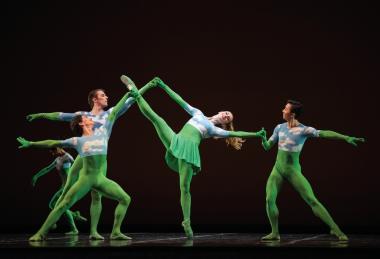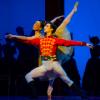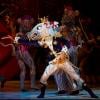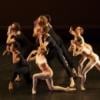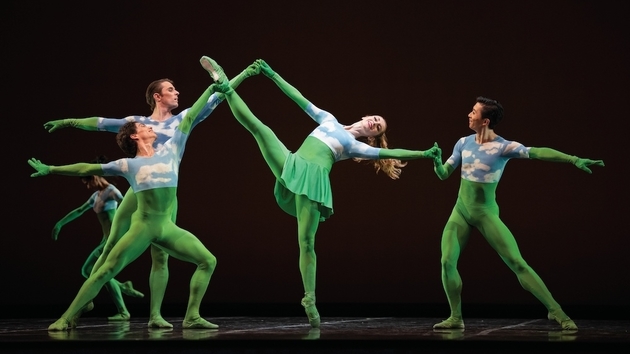
There’s nothing like the unexpected to show off the San Francisco Ballet’s versatility as well as the management’s improvisatorial skills. When Liam Scarlett, choreographer of a new piece, Hummingbird, was suspended from England’s Royal Ballet pending an investigation of alleged sexual misconduct, San Francisco Ballet withdrew its world premiere. Instead, various short ballets from the repertory are being rotated in for the season’s Program 2 through Feb. 22. The first iteration last Tuesday night included the already scheduled Bespoke, choreographed by Stanton Welch, created for the 2018 Unbound Festival, and the 1999 Sandpaper Ballet, created for the company by Mark Morris.
Filling in the Scarlett gap were three ballets: Foreshadow, Val Caniparoli’s new piece for the company’s 2020 Gala last month, Christopher Wheeldon’s 2005 After the Rain, and Artistic Director Helgi Tomasson’s 1996 Soirees Musicales.
We could pause here for a discussion of why the Scarlett piece was dropped; the choreographer’s guilt or innocence remains at this writing an open question. But these are uncommon times, and in the #MeToo era, the San Francisco Ballet has been untainted by so much as a whiff of scandal. Why risk guilt by association now?
Of equal and more salutary interest is the depth of the repertory and the diversity of the company that made the swift and successful substitution of three pieces possible within the two weeks of the San Francisco Ballet’s announcement.
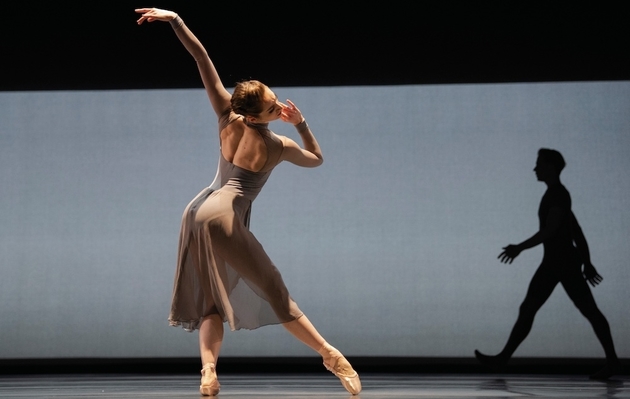
Foreshadow, Caniparoli’s compelling pas de trois set to Ludovico Einaudi and based on the Anna Karenina love triangle of Anna (Jennifer Stahl), Count Vronsky (Tiit Helimets), and Kitty (Elizabeth Powell), is tightly packed with emotive power, underscored by Jim French’s gray and white lighting design. Vronsky’s anguish is matched by that of the two women; the curving and entwining tensions of three bodies climax in the eruptive power of Kitty, for all the world like a heat-seeking missile. But in Tolstoy World it’s a train, remember, that ends it all; that light isn’t at the end of the tunnel, but blindingly here as the stage goes black.
What a balm, then, to watch Wheeldon’s After the Rain, with Yuan Yuan Tan as much our focal point as her partner Luke Ingham. Tan at 25 years with the company remains the most stunning figure on its stage, graceful and daring, and her skill as a ballerina is equaled by her ability to act, to wordlessly step into any character of her choosing and make it real. Here, she’s in a private space, probably a bedroom, in a salmon-pink leotard, curling trustingly around Ingham, lifted and turned, her hair streaming, her body at ease but filled with the stilled attention that makes us want to know what she’ll do next. Ingham, a graceful and gracious dancer, seems to relish his supportive role, which just shows how intelligent a partner he is.
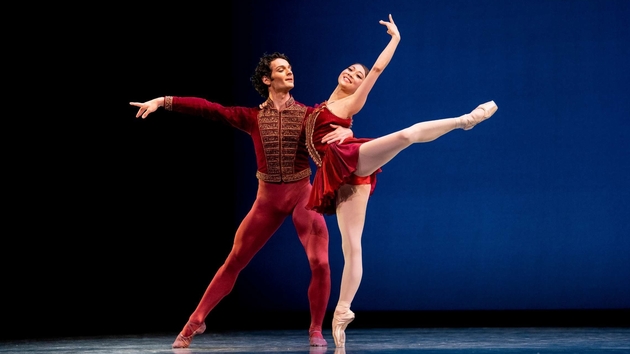
The bright and blithe tutu pas de deux Soirees Musicales, with Misa Kuranaga trading pyrotechnics with Angelo Greco, to music by Benjamin Britten, was its gasp-inducing, solidly Classical self. Each difficult-to-nigh-impossible passage, from pirouette to grand jeté and back again, seemed perfectly framed, each move a delightful memory.
As for the evening’s main courses, the Welch Bespoke speaks louder than it did at its premiere. One has the impression of being in a rehearsal hall with people who all know each other, and the music, well. That it’s set to two achingly familiar Bach violin concertos — A-Minor and G-Major, played by Cordula Merks — is in its favor. With the exception of a nasty spill by the principal dancer Frances Chung, who recovered in the fashion of a true trouper, the ensemble work seemed as natural as breathing, almost anthem-like, but in the liveliest, most exploratory of ways. Standout performances came from Mathilde Froustey, whose ballerina-ness gives special life to each move, and Wei Wang, whose virtuosic solo of leaps and spins was both witty and gutsy.
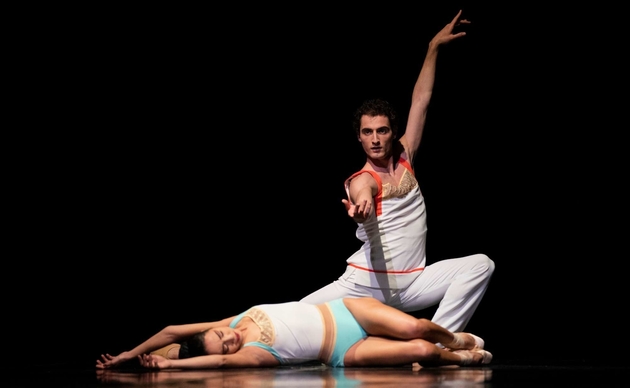
Morris’s crowd-pleasing Sandpaper Ballet, set audaciously to a medley of Leroy Anderson tunes, has never been performed better by the giant ensemble of 25, in their twerpy cheerleader-like outfits of green, right down to their built-in green gloves (thanks to Isaac Mizrahi). But there’s something in it that feels darker now than in 1999, and I was tempted to buttonhole Morris and ask him if he noticed it too.
The perkier the dancers looked — the pony-tailed prancing horsey set of “Sleigh Ride,” the cheerily meticulous mechanicals of “Syncopated Clock,” the willing carriage-throwers of “The Typewriter,” the grinning, lockstepping mass of them (oh, there were a couple of human-interaction moments, but you could almost miss them), the more worrisome it seemed.
Anderson, a stalwart creator of earworms in the 1940s and ’50s, loomed large in America. Then as now, he seemed of a piece with TV variety shows, Ralph Kramden, Madison Avenue, Father Knows Best, and, in the blazing, alienating light of today, Madmen.
But back in the day (nearly a decade before the Beatles), our junior-high music teacher (music classes were still solidly part of New York’s public-school curriculum), a blue-eyed Midwesterner with a brush cut and a skinny black tie, reverently held forth on Leroy Anderson, playing his clickety-clacking Americana for an entire school period as he never had for Copland or Bernstein or even Ferde Grofé.
Anderson was fun, an easy sell, and maybe our teacher thought we wouldn’t be able to understand those other guys. And maybe we didn’t understand Leroy Anderson either, or aren’t understanding him now. If Mark Morris, whose brilliance, sense of fun, and cynicism has created some of the best ballets of the last 30-odd years, has anything to say about any of this, it would be great to hear from him.

